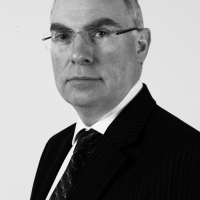
But does the supposed delicate state of the economy reflect its true condition, or merely our perception?
What will be the traits that might emerge in the future that will lead us to conclude it is no longer so brittle?
My conclusion is that the economy is not now so fragile it cannot cope with the first steps being taken to normalise monetary policy. Indeed, I feel strongly that beginning to edge interest rates higher will not undermine the evolving recovery, but will make it more robust.
A recovery that can be maintained only on the basis the bank rate remains at 0.5% will become increasingly flimsy. We will make the economy less vulnerable if, slowly, we take policy steps that allow it to acclimatise to a more normal policy regime.
At the same time, beginning to take interest rates slightly higher will avoid the risk that growth once again becomes too reliant on debt-fuelled consumption, and will give the authorities some scope for supportive policy action, should that be required at a later date.
Both the Treasury and the Bank of England think the greater risk is in tightening too early. So, with the economy already growing at an annualised rate of about 3.5% and seemingly still gaining momentum, when will too early become too late?
If changes in monetary policy had an instant impact on activity, the risks of delaying policy changes would be lower. But the delay between a change in interest rates and its impact on growth is substantial (about a year) and there is a further lag before a change in the growth rate influences the price level. So, in judging what to do with interest rates today, we have to assess how the economy is likely to develop on a one- to two-year time scale.
The longer the economy is allowed to gain momentum unchecked, the greater the likelihood that we will experience a sharper than necessary slowdown in two to three years’ time. One of the surprising features of the recession was that it did not result in more spare capacity being released. But on the BoE’s own assessment, spare capacity is no more than 1.5% of GDP (the Office for Budget Responsibility estimates it was 1.7% at the end of 2013).
At current growth rates, this will be largely absorbed within a year. If, as full capacity is reached, the economy continues to grow at a rate in excess of 3% (arguably, in excess of 2.25%), the probability growth will begin to generate significantly higher inflationary pressure will rise appreciably.
The focus of the BoE’s Monetary Policy Committee should now be on the policy environment required to nurture a well-balanced recovery. Recent developments are both helpful and unhelpful in this context.
Signs companies are beginning to make use of balance sheet strength both to raise capital investment and to embark on a higher level of corporate activity are very positive, and indicate we have moved into a new phase of the economic cycle: one that will be less reliant on policy help to maintain growth.
At the same time, there is beginning to be too much heat in the housing market, and there is also evidence rising consumer confidence is feeding through to faster growth in spending. While I do not see either of these trends as very problematic at the moment, they will both become so if allowed to run on.
Monetary policy is as much an art as a science. The art is in getting the timing right, and in policymakers having sufficient awareness of where current dynamics will take us if no action is taken.
Richard Jeffrey is CIO of Cazenove Capital Management















